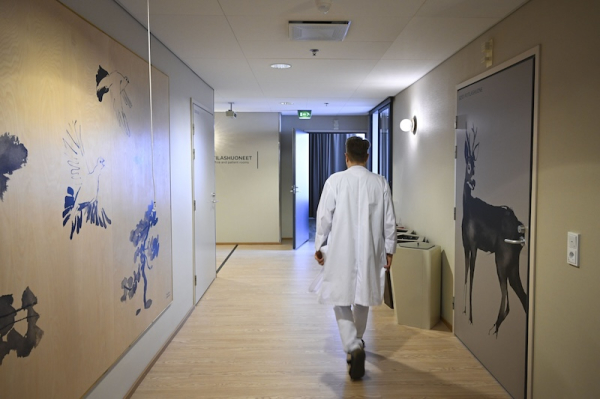Kela subsidies for private doctors cost more, achieve little

Yle: Government’s major increases to public subsidies for private doctor visits have little impact on visit numbers. Photo: Emmi Korhonen / Lehtikuva
- Previous Article Cost-saving shift to large daycare centres sparks debate in Finland
- Next Article Report: Finland’s economic growth built on just two sectors
A major increase in public subsidies for private doctor visits in Finland has led to minimal impact on service use, while significantly raising public expenditure, according to new data from Kela.
At the start of 2024, the government raised the reimbursement for each private doctor visit from €8 to €30. The aim was to ease pressure on public healthcare by encouraging patients to shift to private providers.
However, the latest figures show that the number of visits has risen by just 2.3 percent, while the cost to taxpayers has nearly tripled.
In the first half of 2023, private doctor visits totalled approximately 1.75 million. For the same period in 2024, that figure rose to just under 1.79 million, an increase of 40,000 visits.
To produce this modest increase, the government spent over €32 million in new reimbursements. Adjusted for price rises, this equates to roughly €750 in taxpayer money per additional visit.
The findings were released in a report compiled by Kela researchers and provided to Yle. Their assessment concluded that the policy has had no meaningful effect on public healthcare queues and that most new visits came from pensioners, with roughly one in 100 making an additional appointment.
“With such a small change, there is unlikely to be any significant impact on the care queues in the welfare regions,” the report stated.
The original reform was promoted by Petteri Orpo’s (NCP) government as a way to improve access and reduce waiting times in the strained public system. A further planned increase in the subsidy, from €30 to €50, was later abandoned.
Instead, funds were redirected to other areas of the healthcare budget, such as fertility treatments.
Mika Kortelainen, professor of health economics at the University of Turku and researcher at the Finnish Institute for Health and Welfare (THL), said the policy has clearly failed.
“The beneficiaries seem to be those who would have visited a private doctor anyway, even with lower reimbursements,” Kortelainen said.
He noted that even with increased subsidies, private doctor visits still often cost more than €100, leaving most of the expense to the patient. This limits the reform’s ability to attract new patients.
The subsidy increase also triggered a rise in prices.
According to Hennamari Mikkola, research professor at Kela, private providers raised prices by eight percent in the first half of the year, more than double the inflation rate of 3.3 percent during that period.
“It is, of course, clear that publicly listed companies want to increase their profits,” Mikkola said.
She added that weak competition in the private healthcare market made it easy for companies to pass the cost of increased subsidies on to customers.
Finance Minister Riikka Purra (Finns Party) has now proposed cutting €90 million from next year’s Kela reimbursements for private medical services.
Kortelainen said the proposed cuts are reasonable, especially as the government prepares an additional €1 billion in public finance adjustments.
HT
- Previous Article Cost-saving shift to large daycare centres sparks debate in Finland
- Next Article Report: Finland’s economic growth built on just two sectors
Source: www.helsinkitimes.fi
